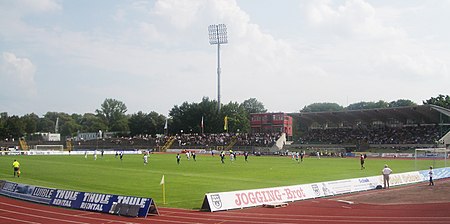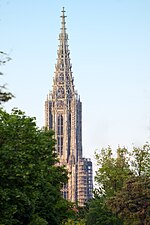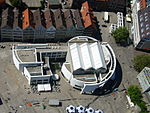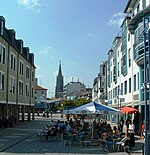Donaustadion
1925 establishments in GermanyAthletics (track and field) venues in GermanyBuildings and structures in UlmFootball venues in GermanySSV Ulm 1846 ... and 4 more
Sport in Tübingen (region)Sports venues completed in 1925Sports venues in Baden-WürttembergUEFA Women's Championship final stadiums

The Donaustadion is a multi-purpose stadium in Ulm, Germany. It is currently used mostly for football matches and is the home stadium of SSV Ulm 1846. The stadium is able to hold 19,500 people. In 1999, a new stand was constructed, filling the last open gap of the former horseshoe shaped ground. This all-seated affair was the first non-smoking stand within a professional football ground in Germany.
Excerpt from the Wikipedia article Donaustadion (License: CC BY-SA 3.0, Authors, Images).Donaustadion
Stadionstraße, Ulm Oststadt
Geographical coordinates (GPS) Address Nearby Places Show on map
Geographical coordinates (GPS)
| Latitude | Longitude |
|---|---|
| N 48.404444444444 ° | E 10.009722222222 ° |
Address
Donaustadion
Stadionstraße
89073 Ulm, Oststadt
Baden-Württemberg, Germany
Open on Google Maps









